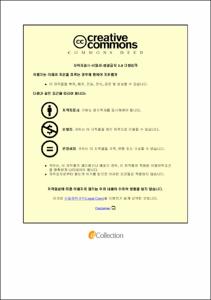Effects of alternative satiation feeding regimes on growth performance and economics of amur catfish (Silurus asotus)
- Alternative Title
- 간헐적 사료 공급이 메기(Silurus asotus)의 성장과 경제성에 미치는 영향
- Abstract
- Fish feed is the most expensive factor in a fish farm enterprise budget. According to the global aquaculture advocate (2014), 60-70 percent of total cost goes into feeds. The study objective was to determine the fish health condition, length and weight relationship, condition factor and economic viability of Amur catfish (Silirus asotus) subjected to a daily and alternate feeding program. Fish were reared in glass aquaria tanks for 65 days at 4 different feeding intervals: daily, after 1-day, after 2-days and after 3-days feeding intervals. Each treatment was in 3 replicates and fish were fed a basal diet of 50% crude protein level throughout the study period. The highest Specific Growth Rate (SGR) of 5.88 ± 1.13 was observed in the control treatment and the least (4.19 ± 0.52) was from the 3-day feeding trial. The SGR in all treatments were ranging from 5.88 ± 1.13 to 4.19 ± 0.52 and they were not significantly different (P ˃ 0.05). The lowest Feed Conversion Ratio (FCR) was observed in the 3-day treatment at 0.51±0.03b. The figure was significantly different (p˂0.05) to the FCR of the daily fed treatment but not significantly different than the results of the after 1-day and after 2-days feeding intervals. One-day feeding trial was observed to have a high survival rate of 97% in comparison to the other treatments. The value of the slope b was found high after 2-days treatment (3.20 ± 0.74) and the least was in the daily feeding trial having 2.64 ± 0.08. All treatments had a condition factor (K) between 0.7-0.73. From the first and second sampling, a high percentage weight gain of 228.15±40.63g, 210.29±28.08g, 197.17 ± 34.94g, and 152.21±9.58g was observed in all the treatments respectively. However, substantial decrease in weight during the culture period was found in all the feeding trials. The partial enterprise budget indicated that Amur catfish net returns were decreasing with increase in feeding frequency. There was however no negative investment returns between the treatments. Amur catfish (Silurus asotus) should be fed into satiation after every one day for optimum growth, survival, and economic returns. Growth increases with increase in feed and that feeding catfish after every 2-days could reduce the labor and production cost.
It is possible and best to alternatively feed fish to satiation for the best growth responses.
Keywords: Daily and Alternate feeding, Amur catfish, Satiation feeding.
- Issued Date
- 2019
- Awarded Date
- 2019. 2
- Type
- Dissertation
- Publisher
- 부경대학교
- Affiliation
- 부경대학교 세계수산대학원
- Department
- 세계수산대학원 양식기술전공
- Advisor
- 박정환
- Table Of Contents
- 1 Introduction 1
2 Background and Literature Review 6
2.1 Fish Health 6
2.2 Fish Stress Condition 7
2.3 Fish Growth Parameters 9
2.4 Fish Growth Models 10
2.4.1 Length-Weight Relationship 12
2.4.2 Fish Body Condition 15
2.5 Fish Nutrition 17
2.6 Feeding rate, frequency and timing 19
2.6.1 Feed Conversion and Efficiency Calculations 22
2.6.2 Food care and storage 22
2.6.3 Managing fish waste 23
2.7 Water Quality Management 23
2.8 Economic Implications 28
2.8.1 Enterprise Budget 29
2.8.2 Capital Costs 30
2.8.3 Variable Costs/ Operational Costs 31
2.8.4 Fixed Costs 31
2.8.5 Breakeven Analysis 32
2.8.6 Enterprise Profitability 32
3 Thesis Statement 34
3.1 Aim and Objectives 35
3.1.1 Aim 35
3.1.2 General Objectives 35
3.1.3 Specific Objectives 35
4 Materials and Methods 37
4.1 Study Site 37
4.2 Materials used in experiment 37
4.3 Experimental Diet 39
4.4 Experimental Design and Data Collection 39
4.5 Assessment of Fish Health Condition 42
4.6 Growth Analysis (Growth Indicators) 43
4.7 Water Quality Analysis 44
4.8 Profitability Analysis (Economic Feasibility) 45
4.8.1 Gross Returns 45
4.8.2 Variable Cost (VC) 46
4.8.3 Fixed Cost (FC) 46
4.8.4 Total Cost (TC) 46
4.8.5 Net return above total costs 46
4.8.6 Yield 46
4.8.7 Unit Selling Price 47
4.8.8 Break-even price (BEP) above total cost 47
4.8.9 Break-even price above variable cost 47
4.8.10 Break-even yield 47
4.9 The Input expenditure 47
4.10 Data Analysis 48
5 Results and Discussion 49
5.1 Specific Growth Rate (SGR) 50
5.2 Length – Weight Relationship 51
5.3 Condition Factor (K) 52
5.4 Survival Rate (SR) 53
5.5 Feed Conversion Ratio (FCR) 54
5.6 Percentage weight gain of treatments 55
5.7 Physicochemical Parameters 56
5.8 The enterprise budget of Amur catfish 57
5.9 Amount of Feed consumed in different feeding intervals 59
5.10 Cost of feed of different feeding schedules 60
6 Discussion 61
6.1 Specific Growth Rate (SGR) 61
6.2 Feed Conversion Ratio 62
6.3 Length weight relationship 63
6.4 Survival rate 64
6.5 Weight gain 64
6.6 Condition factor (K) 65
6.7 Enterprise budget 66
7 Conclusion 68
7.1 Future Prospects/ Recommendations 68
7.2 Limitations of the Study 69
8 Acknowledgement 70
9 Author profile 71
10 Bibliography 72
11 Appendices 81
11.1 Activity Chart timeline 81
11.2 Flow Chart of Research Activities 83
- Degree
- Master
- Files in This Item:
-
-
Download
 Effects of alternative satiation feeding regimes on growth performance and economics of amur catfish.pdf
기타 데이터 / 893.87 kB / Adobe PDF
Effects of alternative satiation feeding regimes on growth performance and economics of amur catfish.pdf
기타 데이터 / 893.87 kB / Adobe PDF
-
Items in Repository are protected by copyright, with all rights reserved, unless otherwise indicated.